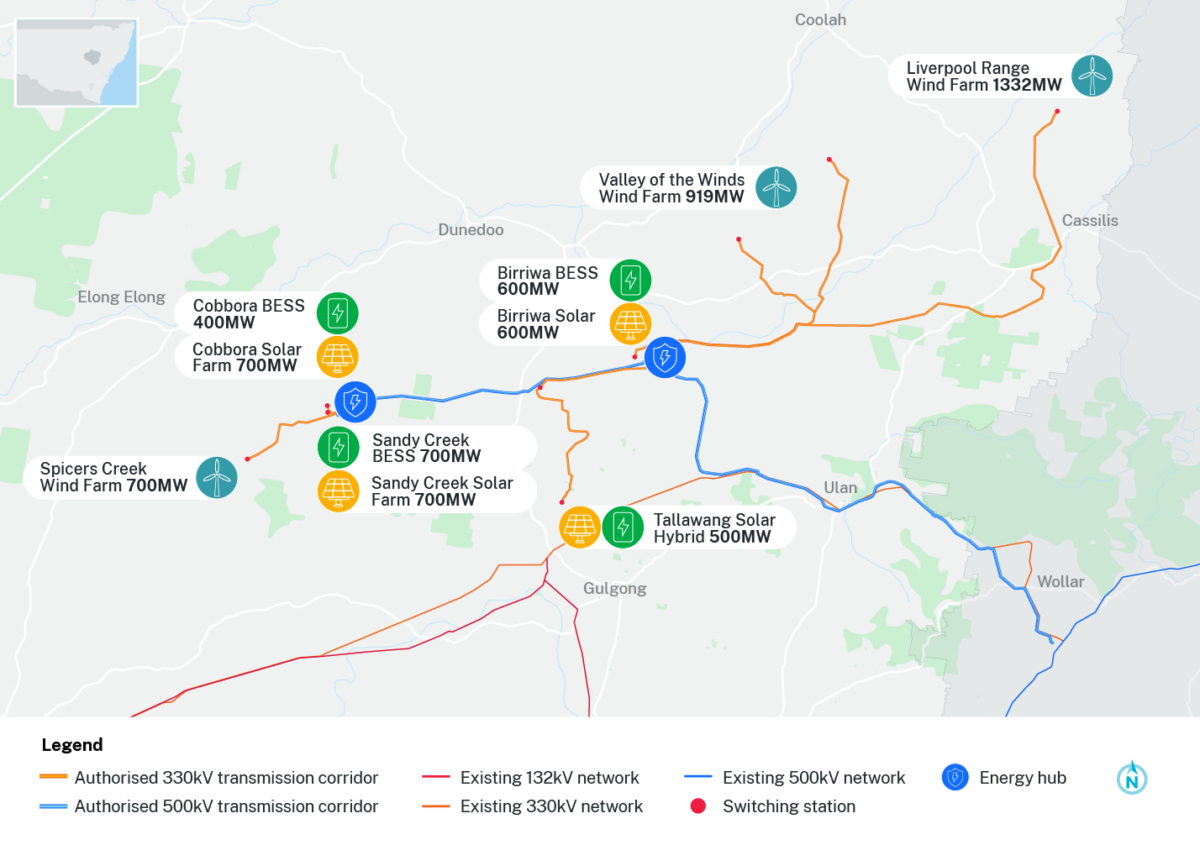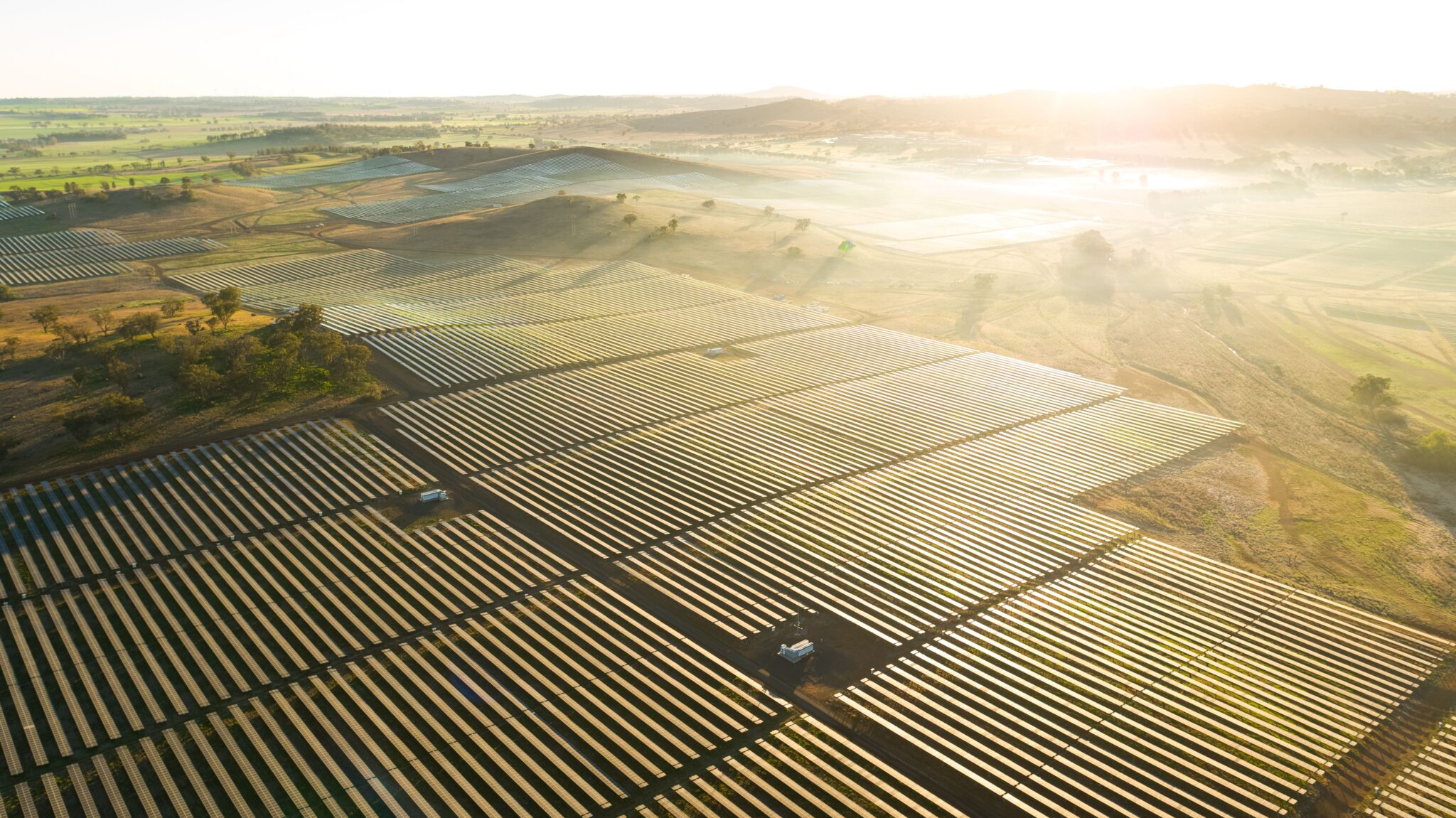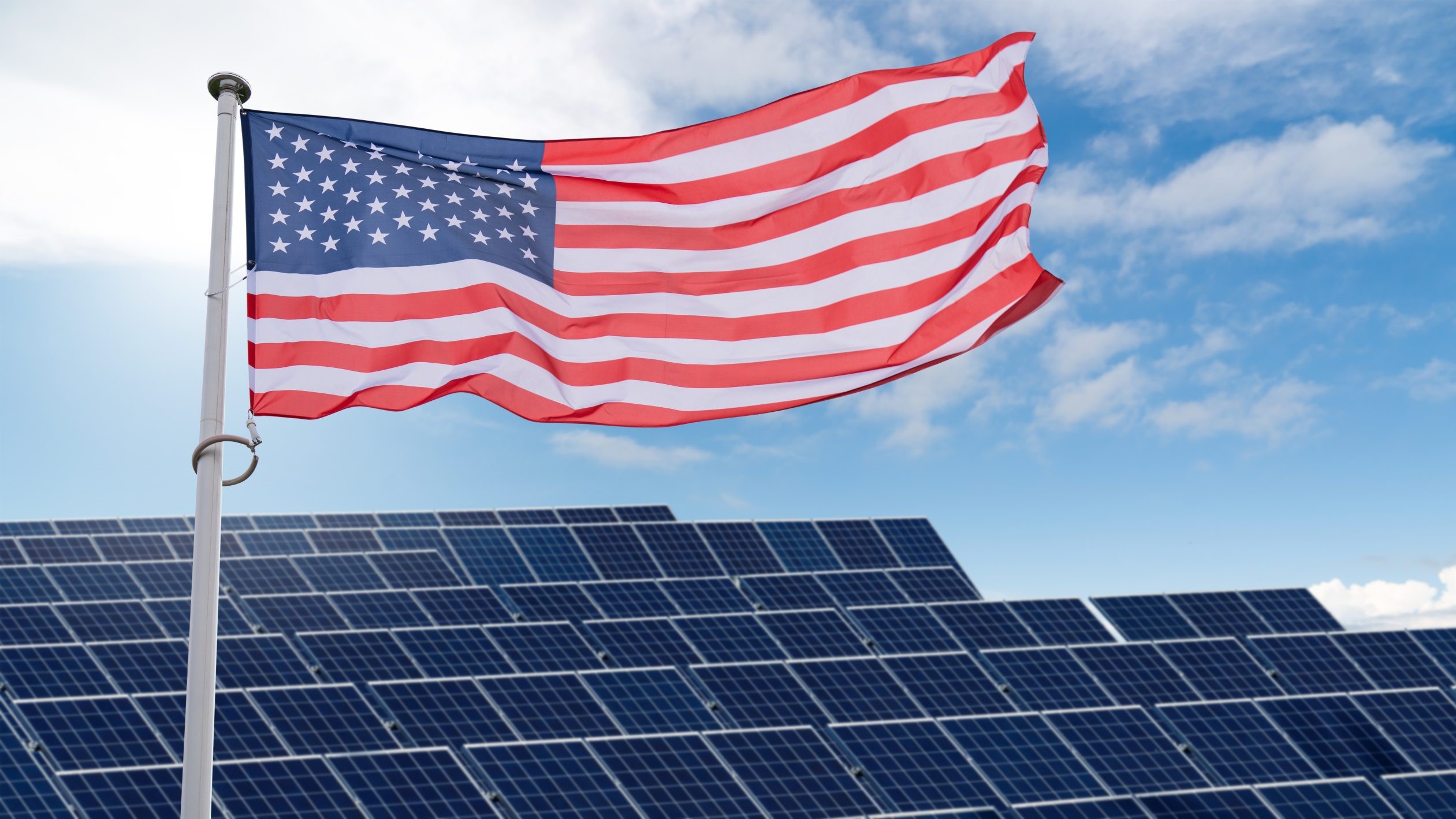With Australian major electricity and gas utility AGL acquiring two early-stage PHES sites in the Hunter region, and the state government granting grid access to a raft of sites in the new Central West Orana REZ, NSW is in line for a slew of storage capacity.
The NSW government has awarded 10 renewable energy projects with a combined 7.15 GW of energy generation and storage capacity access rights to connect to network infrastructure in what will be the state’s first REZ.
Centered around the regional city of Dubbo, the Central-West Orana REZ is the first of five planned by the NSW government as part of its strategy to replace the state’s aging coal-fired generators.
The 20,000 km2 zone is expected to deliver at least 4.5 GW of new network capacity, allowing for 7.7 GW of solar, wind, and battery facilities to connect into the grid.
Projects granted access rights in the Central West Orana REZ include British developer Lightsource bp’s Sandy Creek developments, which include a 750 MW solar farm and an up-to-750 MW/3 GWh battery energy storage system (BESS).
Pacific Partnerships, a subsidiary of Australian construction and engineering firm Cimic Group, has secured access rights for its Cobbora project that includes a 700 MW solar farm and a 400 MW/800 MWh battery.
Potentia Energy, an Australian renewable energy company co-owned by Italy’s Enel Green Power and Japanese oil and gas giant Inpex, has got the nod for the Tallawang hybrid project that comprises a 500 MW solar farm and a 500 MW/1 GWh battery.
Other successful projects include Acen’s Birriwa project, which will include 600 MW of solar alongside a battery of up to 600 MW, with two hours of storage capacity, and the Philippines-headquartered company’s planned 919 MW Valley of the Winds wind farm.
Squadron Energy’s 700 MW Spicers Creek and Tilt Renewables’ 1,332 MW Liverpool Range wind farms complete the list.
The Liverpool Range and Spicers Creek wind farms, and the Birriwa solar and battery project, have already secured planning approval. The other projects are still subject to planning approval processes, including ongoing community consultation.
EnergyCo, the state-owned authority charged with delivering the REZ, said the 10 projects have a total of 7.15 GW of renewable energy and storage capacity. When fully operational, the 10 projects are expected to generate 15 TWh of energy per year and will be capable of powering 2.7 million homes by 2031, in peak periods.
“This is a landmark initiative that puts NSW on the map as a leader in renewable energy innovation,” EnergyCo Chief Executive Officer Hannah McCaughey said. “Granting access rights to these renewable energy projects will almost double NSW’s current, operating large-scale wind and solar generation.”
The announcement brings to 10 GW the amount of new capacity NSW has pushed forward in recent weeks, after 3.65 GW of new projects were granted access rights in the South West REZ in late April.
NSW Energy Minister Penny Sharpe said the projects will help ensure the state has enough renewable energy generation and storage when coal-fired power stations retire. They also give certainty to host communities and deliver billions in private investment in the region.
“This deal will secure billions of dollars of private investment in renewable energy and deliver enough electricity to power 2.7 million NSW homes a year,” she said.
“By unlocking new renewable capacity and enhancing battery storage, we are making our power grid more reliable and putting downward pressure on bills.”
The state government said the 10 projects are expected to bring more than 3,200 jobs to the Central West Orana region during construction and 870 ongoing operations and maintenance roles, over the average 30-year agreement.
PHES projects
Power giant AGL announced it has acquired two early-stage PHES projects being developed by former Australian prime minister Malcolm Turnbull’s Upper Hunter Hydro (UHH), in the NSW Hunter region.
The projects, being developed at the Glenbawn and Glennies Creek reservoirs in the Upper Hunter, are to provide 770 MW and 623 MW of capacity, respectively, with each facility able to deliver approximately 10 hours of dispatchable power. AGL said there is also the potential to integrate wind generation to the mix in the future.
Both projects are in the early development stages and a provisional timeline for their development is being prepared by AGL, including next stages, project approval, construction, and when the projects would be operational.
AGL Chief Operating Officer Markus Brokhof said the acquisition of the pumped hydro projects adds new long-duration storage to the company’s development pipeline, a key part of its ambition to add 12 GW of new renewables and firming to its portfolio by 2035.
“It is crucial the future energy system is developed with a spectrum of storage and firming, encompassing short-, medium-, and long-term storage technologies,” he said.
“Developing pumped hydro energy storage and other synchronous long-duration storage is integral to ensuring reliability and affordability as Australia transitions to a renewable energy system.”
Brokhof said the appeal of pumped hydro is the long technical lifetime of a project, noting this can range between 80 and 100 years.
The Glenbawn and Glennies Creek projects add to the 400 MW/3.2 GWh Muswellbrook pumped hydro project AGL is already developing in the Hunter, in collaboration with coal miner Idemitsu Australia, the local subsidiary of Japanese petroleum company Idemitsu.
Turnbull, the outgoing chairman of UHH, said AGL’s financial and technical capability and its existing presence in the Hunter would help drive the development of the Glenbawn and Glennies Creek projects which will provide the firming capacity required to optimize renewables.
“Long-duration storage will play a critical role in Australia’s future energy system, helping to keep the grid reliable by shifting renewable energy to match consumer demand,” he said. “The Glenbawn and Glennies Creek projects are well placed to create jobs and drive investment in the Hunter which plays a pivotal role in the energy transition.”
UHH said the Glenbawn and Glennies Creek projects are located in strong areas of the National Electricity Market and are also well placed to utilize the new transmission capacity being developed as part of the NSW government’s Hunter-Central Coast REZ.
Brokhof, however, cautioned that government support will be required to help bring the projects to market.
“AGL is encouraged by the NSW government’s decision to maintain eight-plus hours as the definition for long-duration storage, as well as its increased targets for long-duration storage,” he said.
From pv magazine Australia.









